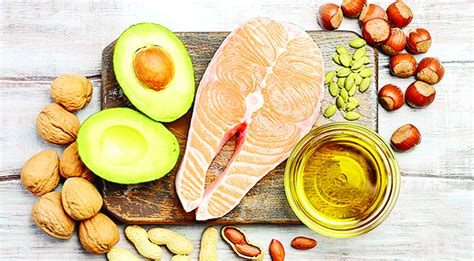Beyond the Breakfast Bell: Embracing Strategic Fasting & Targeted Refeeding
For decades, conventional wisdom has dictated a rhythm of three square meals a day, perhaps with a few snacks interspersed, to maintain energy and prevent hunger. While this approach serves many, for men striving to optimize peak energy, mental clarity, and physical performance, it often falls short. Constant grazing can lead to perpetual energy highs and lows, fluctuating insulin levels, and a body perpetually reliant on glucose for fuel. What if the secret to sustained vigor lies not in more frequent eating, but in a more intelligent, even counterintuitive, approach to when and how we fuel?
The Conventional Trap: Energy Swings and Metabolic Stagnation
The standard eating pattern, particularly when laden with refined carbohydrates, can create a rollercoaster of blood sugar spikes and crashes. This leads to periods of intense focus followed by brain fog, afternoon slumps, and a general feeling of energy instability. For men, this constant fueling can hinder the body’s natural ability to tap into fat stores for energy, leading to decreased metabolic flexibility. Furthermore, it can interfere with hormonal rhythms crucial for muscle maintenance, fat loss, and overall vitality, such as optimal growth hormone release.

Unveiling the Strategy: Strategic Fasting & Targeted Refeeding
The counterintuitive, yet highly effective, strategy is not about simply eating less, but about Strategic Fasting & Targeted Refeeding. This method involves intentionally extending periods without food (fasting) to promote metabolic shifts, followed by concentrated periods of nutrient-dense eating (refeeding) timed around peak performance needs and recovery. It’s a nuanced evolution of intermittent fasting, focusing less on rigid windows and more on adapting eating patterns to a man’s unique daily demands and biological rhythms.
How it Works in Practice:
- Embrace the Morning Fast: Rather than immediately breaking fast, delay your first meal until midday or early afternoon. This leverages the body’s natural morning cortisol surge for mental alertness and encourages the use of stored body fat for energy.
- Concentrated Refeeding: Consume your daily caloric needs within a shorter, more concentrated window (e.g., 6-8 hours), typically aligned with your most physically or mentally demanding activities and post-workout recovery.
- Nutrient Density is Key: When you do eat, prioritize whole, unprocessed foods rich in protein, healthy fats, and complex carbohydrates (especially around activity).

Why It Works: Hormones, Metabolism, and Mental Edge
This strategy taps into several powerful physiological mechanisms:
- Enhanced Metabolic Flexibility: By periodically depleting glycogen stores, the body becomes more efficient at burning fat for fuel. This leads to more stable energy levels, reduced reliance on constant food intake, and improved body composition.
- Optimized Hormonal Response: Fasting can boost growth hormone levels, crucial for muscle repair, fat loss, and anti-aging. It also improves insulin sensitivity, making your body more efficient at utilizing nutrients when you do eat, and reduces the risk of insulin resistance.
- Autophagy & Cellular Repair: During fasting, the body initiates autophagy, a cellular “housekeeping” process that removes damaged cells and regenerates new, healthy ones, contributing to longevity and overall cellular health.
- Sharpened Mental Clarity: Many men report heightened focus, improved cognitive function, and sustained mental energy during fasted periods, attributed to increased brain-derived neurotrophic factor (BDNF) and ketosis.
- Better Body Composition: By improving fat burning and insulin sensitivity, this approach often facilitates easier fat loss while helping to preserve lean muscle mass, especially when combined with resistance training.

Implementing the Strategy: A Practical Guide for Men
While the concept is straightforward, successful implementation requires consistency and listening to your body:
- Start Gradually: Don’t jump into 16+ hour fasts immediately. Begin by delaying breakfast by an hour or two, then incrementally extend the fasting window over several days or weeks.
- Hydrate Aggressively: During fasting periods, drink plenty of water, black coffee, or unsweetened tea. Electrolytes can also be beneficial, especially as you extend fasting durations.
- Prioritize Nutrient-Dense Meals: When it’s time to eat, focus on protein-rich foods (lean meats, fish, eggs, legumes), healthy fats (avocado, nuts, olive oil), and a wide array of vegetables. Strategically place carbohydrates (sweet potatoes, rice, fruits) around your most intense workouts or in the evening to aid recovery and sleep.
- Listen to Your Body: Pay attention to hunger cues, energy levels, and mood. This strategy is about optimization, not deprivation. Adjust fasting and eating windows based on how you feel and your daily activity levels. Some days may require a shorter fast or an earlier meal.
- Incorporate Strength Training: Resistance exercise synergizes perfectly with strategic fasting, helping to preserve muscle mass and enhance the body’s response to nutrients when refeeding.

Beyond the Plate: Integrating Lifestyle Factors
For true optimization, strategic fueling must be part of a holistic approach. Adequate sleep, stress management, and regular physical activity are non-negotiable partners in achieving peak energy and performance. Strategic fasting can actually enhance sleep quality and stress resilience by regulating circadian rhythms and improving hormonal balance, creating a virtuous cycle.

Conclusion: Redefining Your Relationship with Food
Adopting Strategic Fasting & Targeted Refeeding challenges the ingrained habit of constant eating. It asks men to consider food not just as a source of calories, but as a powerful tool to manipulate metabolic states, enhance hormonal health, and unlock sustained energy and sharper focus. By moving beyond conventional meal timing, men can tap into an ancient biological wisdom that redefines their relationship with food, transforming daily performance and overall well-being. It’s a strategy that requires patience and adaptation, but the dividends in energy, clarity, and physical resilience can be profound.




